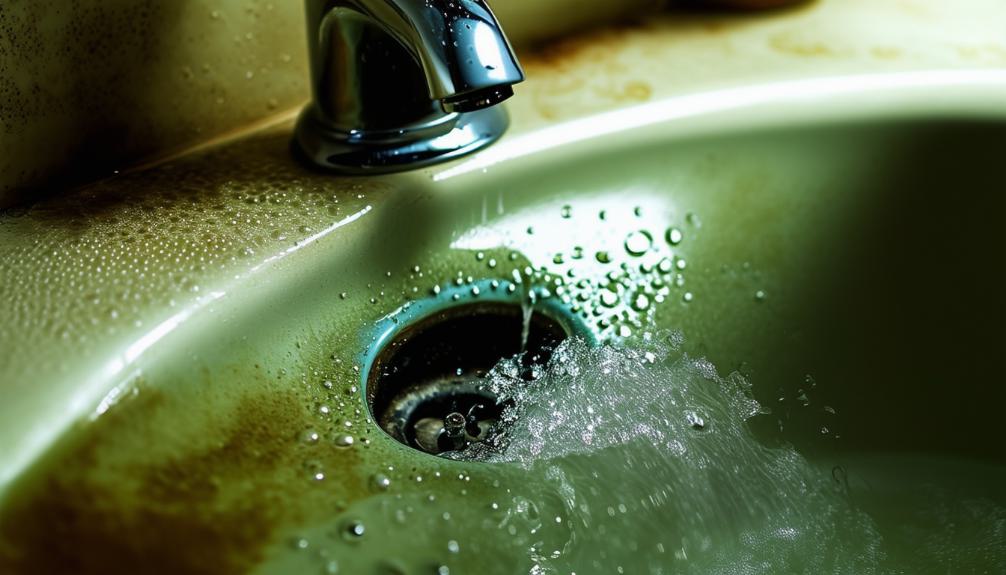Ever walked into your bathroom only to be greeted by an unpleasant smell coming from the sink? You’re not alone.
A smelly bathroom sink can be a real nuisance, affecting your comfort and the overall ambiance of your home. It could be due to clogged drains, bacterial buildup, or plumbing issues.
In this guide, we’ll uncover the common causes behind these odors and provide practical solutions to restore freshness. Say goodbye to that unwelcome aroma and hello to a pleasant, clean-smelling bathroom. Let’s dive in!
Key Takeaways
- Bacteria buildup and dry p-traps often cause smelly bathroom sinks. Regular cleaning and water use prevent odors.
- Biofilm from everyday materials like toothpaste and soap can cause foul smells. Baking soda and vinegar effectively combat this.
- Proper ventilation and maintaining the p-trap’s water level are crucial for preventing sewer gases from entering your bathroom.
- Persistent odors may indicate serious plumbing issues. Professional plumbers can inspect and resolve these underlying problems.
Causes of Odors
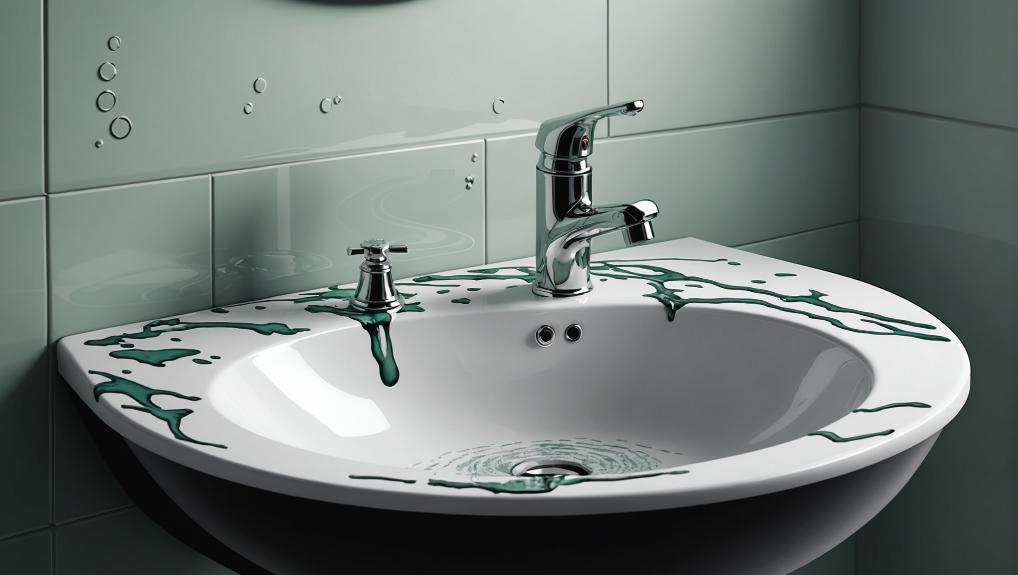
Bathroom sink odors often stem from bacteria buildup in the pipes. Bacteria thrive in warm, dark environments, making our sinks an ideal habitat. Over time, they form biofilm and black gunk on stoppers, leading to unpleasant smells.
Another cause is a dry p-trap, common in seldom-used bathrooms. The p-trap usually holds water to block sewer gases, but when it dries out, those odors can escape into the bathroom.
Sewer smells might also indicate plumbing issues. Clogged drains or poor ventilation can allow sewer gas to rise through the pipes and enter our homes. Everyday materials like toothpaste and dead skin contribute to the buildup of organic matter, creating a breeding ground for bacteria and resulting in more odors.
Proper ventilation is crucial. Without adequate airflow, moisture can accumulate, worsening the odor problem. Ensuring good ventilation keeps the air fresh and reduces lingering smells. Understanding these causes helps us maintain a fresher bathroom environment.
Bacteria Build-Up
Bacteria build up in bathroom sinks due to the accumulation of everyday materials like toothpaste, soap, and dead skin cells in the drains. These materials combine to form a biofilm, often seen as black gunk on sink stoppers.
This biofilm not only looks unpleasant but also causes foul odors emanating from our bathroom sinks.
Neglecting regular sink maintenance exacerbates bacterial buildup, leading to persistent smells and potentially requiring intensive cleaning. Hence, it’s crucial to understand how bacteria thrive in bathroom sinks and address the issue promptly.
Effective cleaning methods include using vinegar or bleach to combat bacterial growth. Pouring a mixture of baking soda and vinegar down the drain breaks down organic matter, while flushing with hot water eliminates lingering bacteria.
Ignoring these simple maintenance steps can result in stubborn odors or even necessitate professional plumbing services. Staying proactive ensures a fresh-smelling bathroom and prevents more significant issues in the future.
Cleaning Techniques
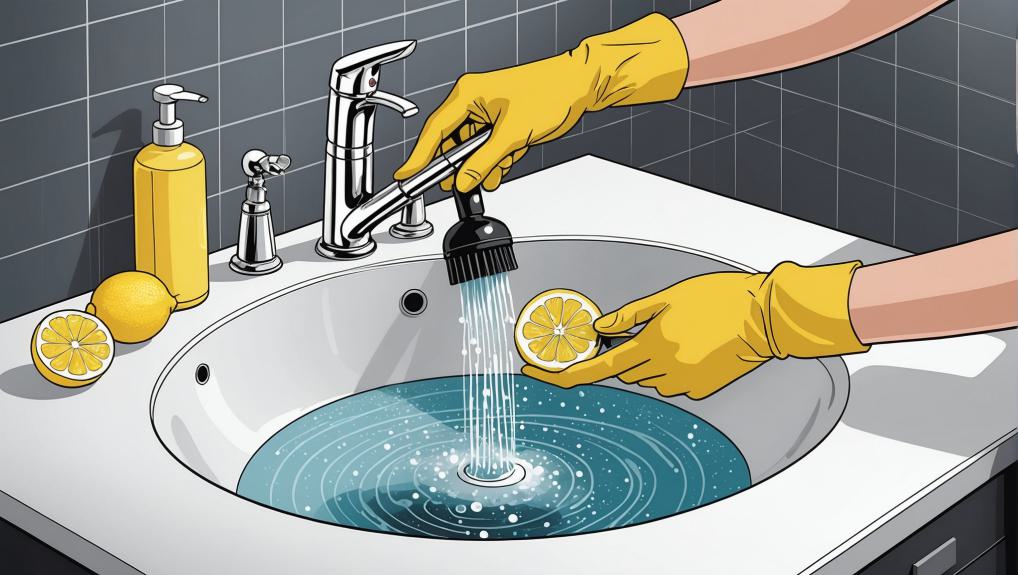
To keep a bathroom sink smelling fresh, use effective cleaning methods regularly.
Check the underside of the sink stopper for black film, which indicates bacterial buildup. Cleaning this film can significantly reduce odors.
Use a mixture of baking soda and vinegar to clear the drain. Pour baking soda down the drain, followed by vinegar. Let it sit to break down grime, then flush with hot water to remove the debris.
Clean the overflow hole, which can harbor bacteria, using a small brush. Pour vinegar or bleach down the hole to sanitize it, but never mix vinegar and bleach due to dangerous fumes.
For persistent odors, pouring hot water down the drain after cleaning can help flush out remaining bacteria and biofilm.
Regularly clean the sink basin with soap and hot water, allowing it to sit before scrubbing, to maintain freshness and hygiene.
Sewer Line Issues
Persistent odors in the bathroom usually point to sewer line issues. These problems can cause sewer gas to seep into your home when the venting system is compromised or clogged.
A dry p-trap, often found in infrequently used bathrooms, is a common cause. Without water in the p-trap, sewer gases can rise through the drain and into your living space.
Routine maintenance of sewer lines is crucial. Persistent odors may indicate a blockage or damage that needs professional attention. Ignoring these signs can lead to severe plumbing problems, including flooding or significant sewage backups, which exacerbate odors and pose health risks.
Proper ventilation systems are designed to keep sewer gas out of your home. If odors persist, inspect the venting system for blockages or failures. Addressing these issues promptly ensures your bathroom remains a pleasant and safe environment.
For example, in cities like New York, where older plumbing systems are common, regular inspections can prevent serious issues. Timely intervention not only preserves the integrity of your home’s plumbing but also safeguards your health.
Vent and P-Trap
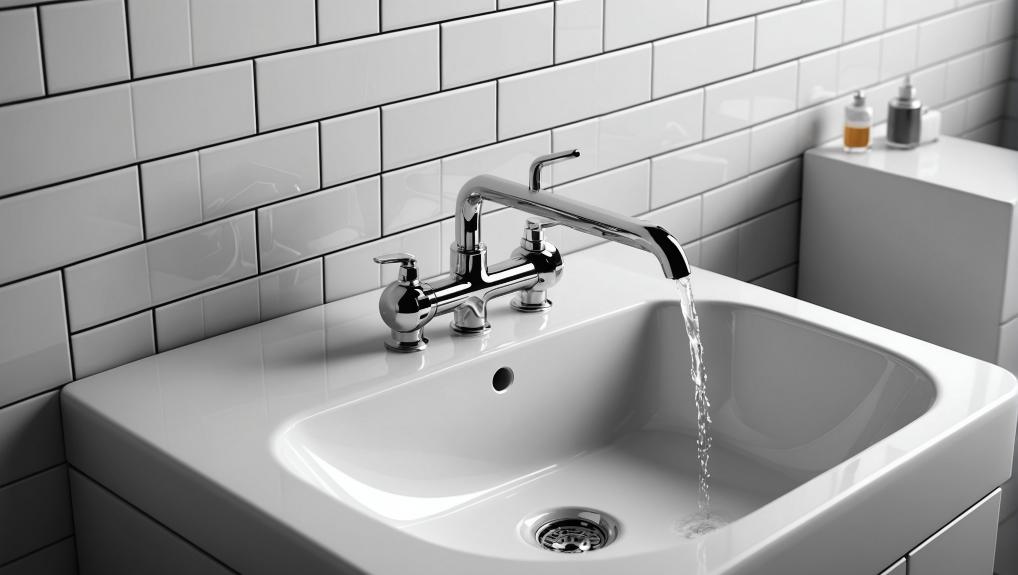
A properly functioning p-trap and vent system are essential to prevent unpleasant odors from escaping your bathroom sink.
The p-trap, the U-shaped pipe beneath the sink, holds water to block sewer gases. If the sink isn’t used regularly, the water in the p-trap can evaporate, allowing foul smells to infiltrate the bathroom.
Proper ventilation is equally crucial. It lets sewer gases escape instead of accumulating in living spaces. A malfunctioning vent system can create negative pressure in the plumbing, drawing those nasty odors into the home and disrupting drainage.
To keep things running smoothly, make it a habit to run water in seldom-used sinks. This simple act ensures the p-trap remains filled, maintaining the essential barrier against sewer smells.
If you’ve done all this and still notice persistent odors, it could indicate a more serious plumbing issue. In that case, a professional inspection might be necessary to identify and fix the problem.
Odor Removal Solutions
To keep your bathroom sink smelling fresh, follow these effective odor removal solutions:
- Regular Cleaning: Clean the sink and drain often. Use vinegar or commercial cleaners to remove biofilm and black gunk, which cause unpleasant smells. After cleaning, flush the drain with hot water to eliminate any leftover bacteria.
- Overflow Pipe Maintenance: The overflow pipe can also harbor odors. Scrub the inner rim and pour vinegar or bleach down it to prevent clogs and eliminate smells.
- Moisture Restoration: In bathrooms that aren’t used frequently, run water in the sink to restore moisture to the p-trap. This moisture barrier is crucial for preventing sewer gas odors from entering the bathroom.
- Consulting a Plumber: If odors persist despite these efforts, consult a plumber. Persistent smells may indicate underlying plumbing issues that need professional inspection.
By following these steps, you can maintain a fresh-smelling bathroom sink and enjoy a more pleasant bathroom environment.
These simple measures can save you from bigger problems down the line.
Regular Maintenance
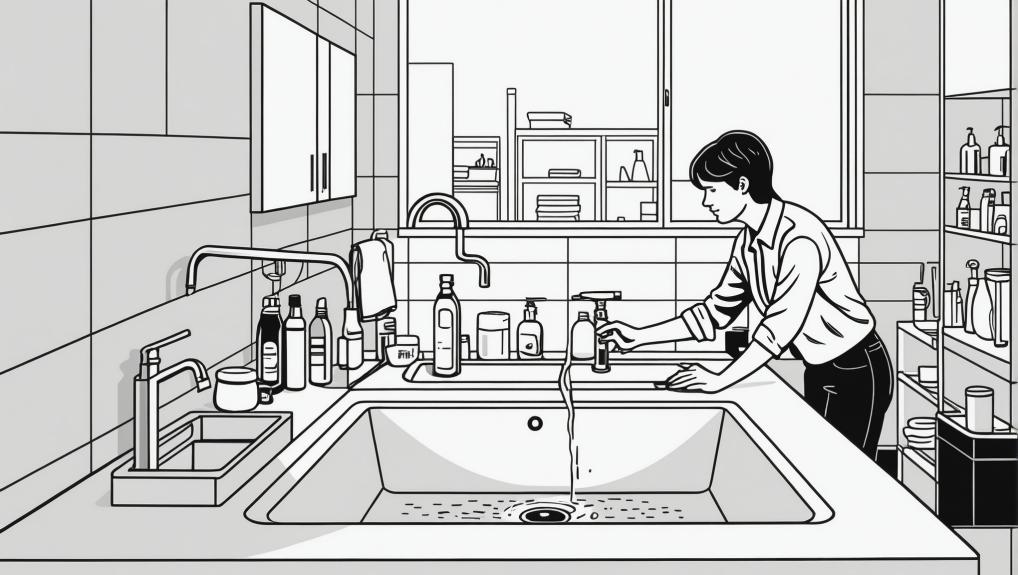
Regular maintenance of your bathroom sink is crucial for preventing unpleasant odors and ensuring a fresh environment. Clean the sink and drain regularly to prevent bacteria and biofilm buildup, which can cause bad smells. Natural cleaning agents like vinegar or baking soda are very effective.
Inspect and clean the overflow pipe and the underside of the sink stopper, as these areas can accumulate black gunk that contributes to foul odors. For sinks that aren’t used often, run water in them at least once a week to keep the p-trap filled and prevent sewer gases from escaping into the bathroom.
Proper ventilation is also critical. Reducing moisture accumulation can prevent odor development and mold growth. Simple actions like opening a window or using an exhaust fan can make a significant difference.
Lastly, schedule periodic professional plumbing inspections to ensure all systems are functioning correctly. A professional can address potential issues before they become significant problems. Following these maintenance steps will keep your bathroom sink fresh and free of unpleasant odors.
Frequently Asked Questions
Can Bathroom Sink Odors Affect Indoor Air Quality?
Yes, bathroom sink odors can impact indoor air quality. They emit volatile organic compounds (VOCs) and harmful gases like methane and hydrogen sulfide. Regular cleaning and proper ventilation are crucial to maintaining a healthy and fresh indoor environment. For example, unclogging drains and using natural deodorizers can help mitigate these odors.
How Can I Prevent Sink Odors in Rarely Used Guest Bathrooms?
To prevent sink odors in rarely used guest bathrooms, run water down the sink weekly to keep the p-trap functional. Clean the drain regularly with vinegar, and ensure proper ventilation. Placing baking soda nearby will help absorb any lingering odors.
Do Natural Cleaning Products Work as Well as Chemical Cleaners for Sink Odors?
Natural cleaning products can work as well as chemical cleaners for sink odors. Vinegar and baking soda, named entities, are effective at neutralizing smells and sanitizing surfaces. These substances may require more frequent applications, but they are eco-friendly and promote long-term cleanliness.
Conclusion
To tackle bathroom sink odors, address bacterial buildup, ensure the p-trap isn’t dry, and use cleaning agents like vinegar or baking soda.
Regular maintenance and proper ventilation keep sinks fresh. If the smell persists, check for sewer line issues or seek professional help.

